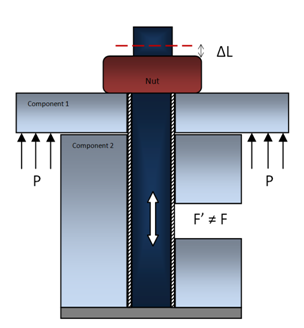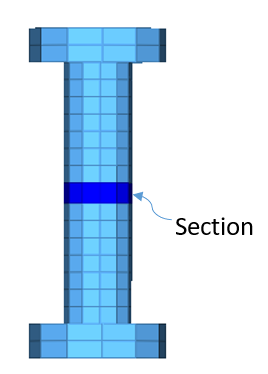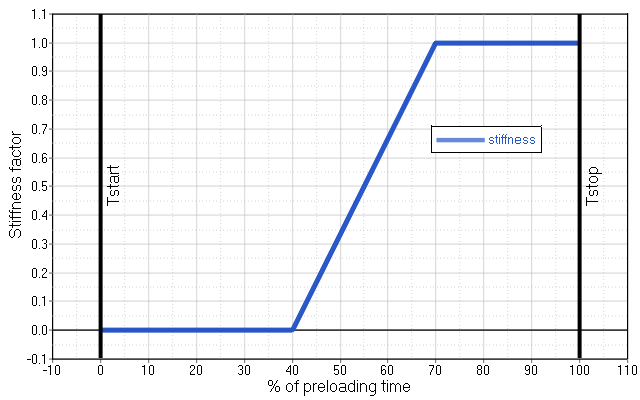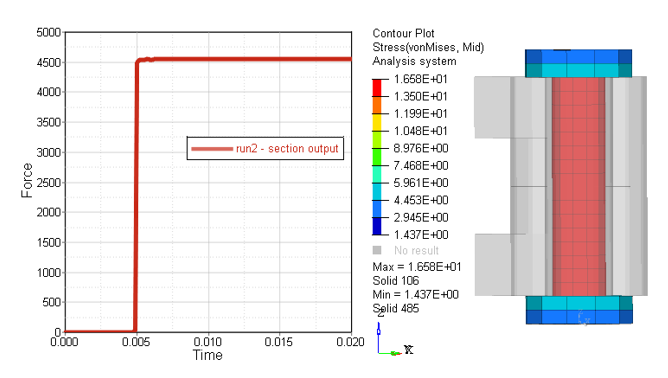Preload
The ability to preload a section of elements is available using the /PRELOAD option. This can be used to model the pretension force in bolts used in assemblies.
Bolt Tensioning
Details of the physical bolt tensioning problem.

Figure 1. Pretensioned Assembly - Application of Pretensioning Loads (Step 1)
In Step 1, upon preliminary assembly of the structure, the nuts on respective bolts are tightened, usually by applying specified torque (which translates into specified tension force according to the pitch of the thread).
As the result, the working part of the bolt becomes shorter by a distance . This distance depends upon the applied force, the compliance of the bolt and of the assembly being pretensioned.
- Pretensioning shortens the working part of the bolt by removing a certain length of the bolt from the active structure (in reality this segment slides through the nut, yet the net effect is the shortening of the working length of the bolt). Since the bolt stretches, there is a smaller effective length of the bolt material to span the distance from the bolt mount to the nut.
- Calculation of each bolt's shortening , due to applied forces , requires FEA solution of the entire model with the pretensioning forces applied. This is because the amount of nut movement due to given force depends on the compliance of the bolts, of the assembly being bolted and is also affected by cross-interaction between multiple bolts being pretensioned.
At the end of Step 1, the amount of shortening for each bolt is established and "locked", simply by leaving the nuts at the position that they reached during the pretensioning step.

Figure 2. Pretensioned Assembly - Application of Working Loads with "locked" Bolt Shortening (Step 2)
Define a Preload
To create a preload in a bolt, the section option /SECT is first used to define a set of elements where the preload will be applied.

Figure 3. Section which Defines a Group of Elements for Preload
The preload amount can be entered as a force (default) or a stress depending on the /PRELOAD, Ityp input option. If a force is entered, the initial cross-section area of the /SECT is used to calculate a stress that is applied to cause the preload. At the defined /PRELOAD Tstart time, the material stiffness of the elements defined in the section is reduced and the tensile stress is applied to the defined section elements which causes the elements to reduce in length resulting in the required preload. Since the material stiffness is reduced, the amount of strain created in the element is also reduced.

Figure 4. Increase in Material Stiffness
The preload can also be activated using a /SENSOR and in this case the Tstart and Tstop times are shifted based on the sensor activation time.

Figure 5. Section Output and Bolt Stress